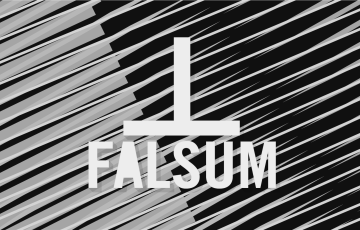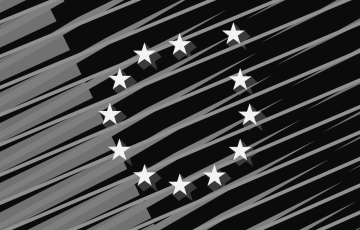Fashion businesses load up their suitcases with their latest designs. They take the Eurostar; exhibiting in London, Paris & Milan. It was easy, fast. Even affording for last minute alterations & the dash to Gare du Nord.
As the Brexit Transition deadline looms in January 2021, the freedom of movement for goods could put an end to the ease of Trade Shows.
The Trunk Show
While the Customs implications of Brexit now are well known for the finished goods of Fashion & Textiles businesses, there are some quirks of the Fashion industry that will see significant extra costs for business.
The modern UK textiles, apparel and footwear sector was built on the assumption freedom of movement – for goods & people – to Europe. British & European manufacturers have made creative use of this access, sending samples, example, fashion shows & pop-up exhibitions.
But with Tariffs of up to 12% for textiles moving into the EU & up to 14% for goods into the UK plus Import VAT, the costs could soon become prohibitive. But there are ways to mitigate.
Customs, Brexit & Non-Compliance
The Customs Issues
For illustration, let’s take a very specific example.
You are an EU-based Fashion business. You wish to take Sample products to exhibit in the UK for a 3-day period. At the end of this period, you will return the products to the EU.
Without any customs procedures in place, you will be required to make a Customs Declaration (SAD Document) to UK HMRC on entry. You will then pay customs duties & import VAT on the full value of the products. The products are new legally classified as ‘UK Goods’.
On return to the EU after 3 days, you will need to provide a Custom Declaration to EU Customs authorities. Customs duties & import VAT will be paid on the ‘UK Products’ at import, despite their EU Origin.
It’s been an expensive trip!
Customs Demands
In the above scenario, to suspend customs duties & import VAT, the Fashion business would need to display to the UK Customs Authorities:
- The goods are of EU-Origin
- The goods will only enter UK for a limited period of time
- The goods are not for sale or re-sale
- The goods will not undergo any processing, change or repackaging whilst in the UK
- The goods will be re-exported
- Proof of re-export will be provided to Customs Authorities
- The importer is liable for the suspended tariff duties
There’s a lot to consider but there are existing customs procedures to cover all of these points.
Hand Carrying Goods in Baggage
While it may feel like it could be easier to avoid this compliance (I mean, who’d ever know, right..?), hand-carrying items in suitcases without complying with customs regulations is illegal in most countries.
There are strict fines & criminal proceedings for smugglers. Merchandise in baggage rules for the UK can be found, here.
Samples, Examples & Temporary Admission
First, there is a definition for Customs Authorities for Commercial goods that are used to develop business, with some easements in place.
Samples
In the eyes of customs, a “sample” is something that you could not resell. There are clear methods to mark samples; a) to cut-up or tear the item, b) to stamp the item with indelible ink.
Samples can be declared using a standard Customs declaration with no customs duties due. The importer will need to provide the correct Customs Procedure Code in Box 37 & provide commercial documentation as evidence.
The definition of a Sample and how to import samples into the UK duty-free can be found, here.
Examples
An “example” looks pristine and could be sold. Almost all fashion samples will fall under this Customs definition.
These goods would, therefore, be subject to full customs duties & import VAT based on their commercial value.
Customs Procedures for Trunk Shows
So, we have to assume that almost all products taken to a Fashion Show, Trade Show or Trunk Show will be classed by customs as ‘Examples’.
So, how can you move these examples, that have no saleable value for your business, from attracting tariffs on the outbound and the inbound journeys?
There are two clear paths, for both the UK & EU, with very different customs compliance; i) Temporary Admission, ii) ATA Carnet.
Temporary Admission
Temporary admission (Temporary Import Procedure) with total or partial relief from import duties can be granted to non-UK goods that are brought into the UK to be used for a limited time period.
When the time limit expires, the goods must be re-exported from the customs territory of the Union in the same condition as they were in upon import to the Union.
However, in most cases, UK Customs requires a guarantee (Cash, Bank Guarantee) that corresponds to the full-value of customs duties & import VAT. If you are a regular importer into the UK or EU, it may be worth exploring the value of Duty-Deferment Account (DDA) to your business and the cashflow benefits available. There are also Guarantee-level easements available for trusted traders.
You will need to discharge the products from the Temporary Admission procedure, on re-export, using a second customs declaration.
The temporary admission rules according to HMRC for bringing in goods duty suspended, here.
ATA Carnet
The ATA Carnet simplifies the custom formalities by allowing a single document to be used for clearing goods through customs in the countries that are part of the ATA Carnet system.
ATA Carnet’s can be issued by Chambers of Commerce. You will need to allow at least 24h from submission to receiving the Carnet. Some Chambers can complete on shorter-timeframes for a fee.
The ATA Carnet requires a detailed record of each individual item, the value & quantity. Each individual Carnet is only valid for those specified goods. Any changes will need a new application & re-issue.
A Carnet-guarantee (Cash, Bank Guarantee or Carnet Guarantee) will also need to be provided for the full Tariff & VAT-exposure to the goods.
HMRC’s Customs explanation on the use of the CARNET system for moving goods temporarily, here.
But what about a UK-EU Trade Deal?
In truth, even if tariff-free access could be agreed between the UK & EU before January 2021, there would still be a requirement for Fashion Brands to declare the merchandise in baggage, or face the criminal consequences outlined earlier.
The tariffs are less the issue, it’s the UK being outside of a ‘Customs Union’ with the EU. Paperwork is the stumbling block.
More Fashion resources
Explore Falsum’s Customs Knowledge Base & Helpdesk service to provide quick, direct answers for Customs & Trade Compliance.
You can visit Falsum’s Fashion & Textiles case-studies to understand how we have helped similar businesses prepare & thrive after Brexit.
Or, join the Falsum Blog for Fashion & Textiles updates, direct to your inbox, as we near the end of Brexit Transition.





